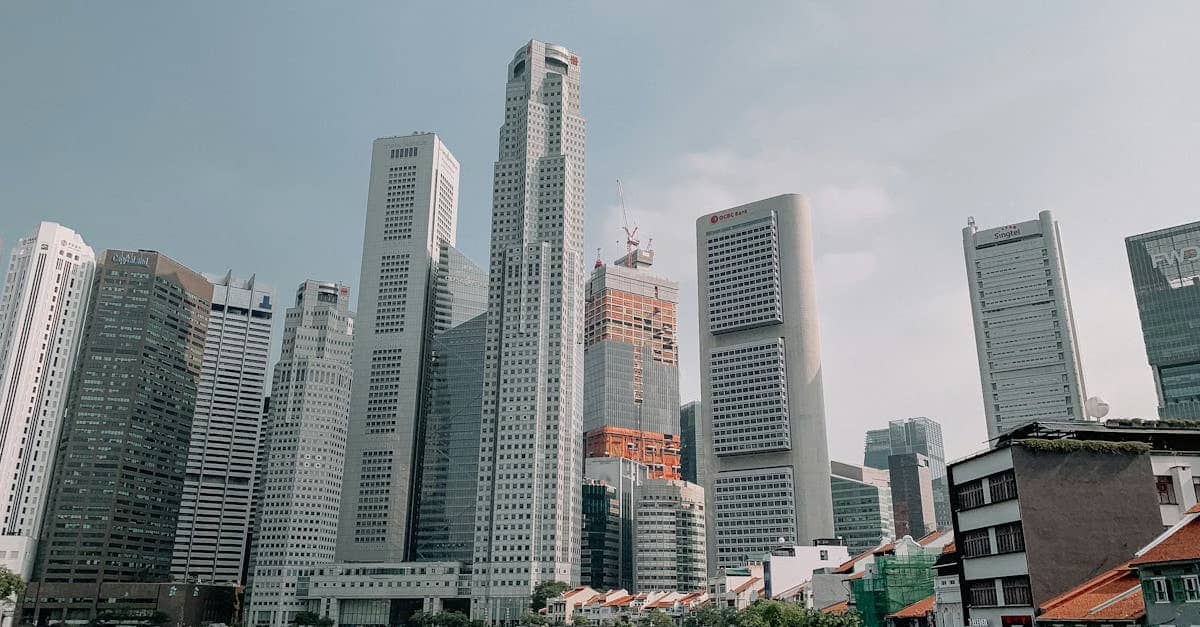How Walkability Boosts Commercial Real Estate Value: A Broker’s Perspective
How Walkability Boosts Commercial Real Estate Value isn’t just an academic concept; it’s a tangible factor that directly impacts property appeal, tenant demand, and ultimately, valuation. For real estate brokers and their teams, analyzing and articulating this value presents both an opportunity to win more listings and a potential pain point in consistently incorporating this complex data into marketing and transaction processes. Manually assessing, documenting, and showcasing a property’s walkability, especially across a diverse portfolio, can be time-consuming and inconsistent. Understanding this crucial element, however, allows brokers to position properties more effectively, negotiate stronger deals, and demonstrate superior market knowledge. It requires a strategic approach, often supported by robust real estate automation and smart tools to ensure this valuable insight isn’t lost in the shuffle of daily operations.
The Fundamentals of Walkability in CRE
Walkability refers to the degree to which a neighborhood or area is friendly to walking. For commercial real estate, this translates into access to amenities like restaurants, retail shops, parks, public transit, and other services reachable on foot from the property. High walkability means employees, customers, and residents can easily navigate the area without relying solely on cars. This convenience isn’t merely a lifestyle perk; it’s a fundamental driver of economic activity and desirability for commercial spaces.
How Walkability Directly Impacts Value
Increased Foot Traffic and Revenue
For retail and restaurant spaces, walkability is paramount. High foot traffic directly correlates with increased visibility and potential sales. A retail storefront in a highly walkable area benefits from spontaneous visits and regular pedestrian flow, leading to higher revenue potential. This makes such locations highly attractive to businesses, driving up demand and lease rates.
Higher Occupancy Rates and Rental Income
Properties in walkable areas generally command higher rents and experience lower vacancy rates across various sectors. For office spaces, proximity to amenities is a major draw for talent acquisition and retention, making these locations preferable for businesses. For multifamily or mixed-use properties, walkability enhances resident satisfaction and desirability, leading to stable occupancy and predictable rental income growth. Investors recognize this stability and are often willing to pay a premium for properties in such locations, directly boosting their market value.
Enhanced Marketability and Appeal
In a competitive market, highlighting a property’s walkability is a powerful marketing tool. It speaks to the lifestyle and convenience offered by the location, appealing to a broader range of potential tenants and buyers. Brokers who effectively quantify and communicate the walkability advantage can differentiate their listings and attract more interest, ultimately leading to faster sales cycles and higher property values. This enhanced marketability directly reflects How Walkability Boosts Commercial Real Estate Value in the eyes of the market.
Influence on Property Types
The impact of walkability varies by property type, though it’s increasingly vital across the board.
Retail
Absolutely critical. Walkable retail areas create vibrant community hubs, driving traffic and sales for businesses. Proximity to residential areas, public transit, and other attractions is key.
Office
Increasingly important. Employees value locations where they can walk to lunch, coffee shops, or errands. This boosts morale, attracts talent, and reduces reliance on parking infrastructure, making the property more attractive to businesses.
Multifamily/Mixed-Use
Essential for resident quality of life. Walkable neighborhoods with nearby parks, shops, and restaurants are highly sought after by renters and buyers, ensuring strong demand and stable returns for investors. Managing the complexities of mixed-use properties requires streamlined operations, often facilitated by AI transaction coordinators and robust transaction coordinator tools.
Identifying and Measuring Walkability
Quantifying something as seemingly subjective as walkability is crucial for proving its value to clients and investors.
Using Walk Score and Other Metrics
Tools like Walk Score, Transit Score, and Bike Score provide standardized metrics to assess a location’s pedestrian, transit, and cycling friendliness. These scores are widely recognized and provide objective data points that brokers can use in marketing materials and valuation analyses.
Assessing Local Amenities and Infrastructure
Beyond scores, a qualitative assessment is necessary. This involves evaluating the density and diversity of nearby amenities (grocery stores, cafes, gyms, etc.), the quality of sidewalks and pedestrian infrastructure, the presence of bike lanes, and access to public transportation hubs. Understanding the local zoning and future development plans can also provide insight into how walkability might evolve.
Leveraging Walkability in Brokerage Operations
Integrating walkability analysis into your brokerage’s workflow isn’t just about marketing; it’s about improving efficiency from lead generation to closing. Analyzing the walkability of target areas can help brokers identify promising opportunities, and having this data readily available streamlines the initial property assessment phase. However, managing the data points, client communications, and compliance requirements for multiple deals simultaneously, especially those with unique location-based advantages like walkability, requires robust systems. This is where tools designed for brokerage efficiency become invaluable.
Integrating Walkability Data into Client Presentations
Don’t just state a property is walkable; show its Walk Score, highlight specific nearby amenities on a map, and explain how this translates to tangible benefits for the client (e.g., increased foot traffic, employee satisfaction). Incorporating this data requires organized digital asset management and streamlined document generation, tasks that can be automated by virtual assistants for real estate.
Streamlining Transactions for Walkable Properties
Properties in highly desirable, walkable locations often move faster. While this is great for deal velocity, it puts pressure on the back office to process transactions quickly and compliantly. Efficient real estate automation tools, such as those offered by ReBillion.ai, help manage this increased workload. Features like AI-powered transaction coordination automate routine tasks, ensuring that critical deadlines related to financing, inspections, and closing are met without manual oversight, reducing the risk of compliance issues even during fast-paced deals.
Actionable Tips for Brokers and Admins
Here are immediate steps you can take to leverage walkability:
- Assess Your Current Listings: For every commercial property you represent, use online tools or conduct a physical survey to determine its walkability score and list specific nearby amenities.
- Update Marketing Materials: Prominently feature walkability scores and lists of nearby attractions in property descriptions, brochures, and online listings.
- Educate Your Team: Train agents and support staff on the importance of walkability and how to effectively communicate its value to clients.
- Integrate Data into Workflow: Use your CRM or transaction management system to tag properties with walkability data. ReBillion.ai’s smart CRM and deal pipelines can help you track properties based on key attributes like location walkability.
- Leverage Automation: Explore how AI transaction coordinators can help manage the increased volume and complexity of transactions that may arise from focusing on highly desirable, walkable locations, ensuring real estate broker compliance throughout the process.
Why Walkability Matters for Brokerage Efficiency
Focusing on and effectively marketing the walkability of commercial properties isn’t just about getting deals done; it’s about getting them done better and faster. Properties with high walkability are often easier to lease or sell, reducing time on market and freeing up agent time for prospecting and new business. Furthermore, understanding and documenting this crucial factor ensures that brokers are providing comprehensive, data-driven advice to their clients, enhancing their professional reputation and reducing potential liabilities associated with incomplete property analysis.
For the brokerage back office, dealing with faster transaction cycles requires scalable, efficient systems. Manually tracking documents, deadlines, and communications for a high volume of fast-moving deals increases the risk of errors and compliance lapses. Implementing smart back office solutions, like those providing agent-broker compliance monitoring and workflow automation, becomes essential. This is where the strategic adoption of tools from ReBillion.ai can directly improve operational efficiency and support growth.
Key Points
How Walkability Boosts Commercial Real Estate Value is undeniable. It drives demand, increases rental income and occupancy, and enhances marketability across retail, office, and multifamily sectors. Effectively measuring and leveraging walkability data is a competitive advantage for brokers. Utilizing real estate automation and AI-powered tools can streamline the process of identifying, marketing, and transacting properties in walkable locations, ensuring both efficiency and compliance.
FAQs
What is commercial real estate walkability?
It’s how easy it is to walk to amenities like shops, restaurants, and transit from a commercial property, impacting its appeal and value.
Why is walkability important for retail properties?
High walkability increases foot traffic, enhancing visibility and potential sales for retail businesses located there.
How does walkability affect office property value?
Walkable office locations attract employees seeking convenience, making the property more desirable to businesses and potentially increasing rental income.
Can walkability be measured objectively?
Yes, tools like Walk Score provide quantifiable metrics, supplemented by assessing local infrastructure and amenity density.
How can brokers use walkability data?
Brokers can use walkability data in marketing, client presentations, and valuation analyses to highlight a property’s location advantages.
Resources
- Learn more about ReBillion.ai’s AI-powered solutions
- Discover AI Transaction Coordinators
- Explore AI Virtual Assistants for Brokerages
- See AI Tools for Real Estate Agents
- Read More on the ReBillion.ai Blog
Conclusion
As a former Realtor, I’ve seen firsthand that neglecting factors like walkability means leaving value on the table. Understanding How Walkability Boosts Commercial Real Estate Value is no longer optional; it’s a necessity for success. By integrating walkability analysis into your practice and leveraging modern tools to manage the resulting deal flow, brokers can enhance their service offering, improve efficiency, and drive greater profitability. In today’s dynamic market, staying ahead means embracing every advantage, including the power of location and the efficiency of smart technology.
ReBillion.ai helps real estate brokers streamline operations with AI-powered transaction coordination, virtual assistants, and intelligent back-office automation. Whether you’re scaling your team or closing more deals, ReBillion.ai is built to simplify your brokerage’s compliance, efficiency, and growth. Visit ReBillion.ai to explore solutions or schedule a consultation.


